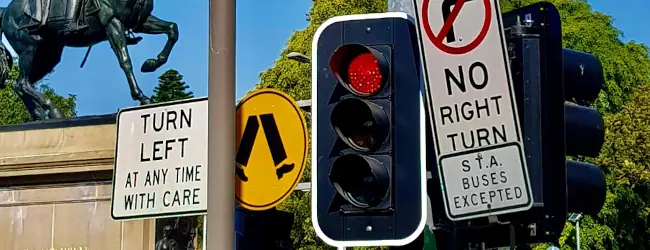Recently, I talked about deciding by mood. Today, I will introduce how to fix our bad moods.
How to fix a bad mood
Sometimes, we want to get rid of a bad mood. It is a state of displeasure or irritation. We might feel it from many factors, such as social stress, stagnation, a setback, lack of sleep, or even changes in the weather.
Some may be struggling with mood swings. It can disturb our concentration.
That is why we want to break the moodiness.

However, we sometimes don’t know how to fix it. Although we are emotionally unsettled, we don’t know not only how to deal with it but also what the emotion is.
In such a case, knowing the state of a bad mood I will explain below would help. It tells us that being aware of two contradictory aspects inside us and choosing the other side would solve it. Today, I will talk about it.
What is a bad mood?
To fix a bad mood, being aware of two contradictory aspects inside us and choosing the other side would solve it. To explain it, let me explain its state.
An unnatural state of our bodies causes a bad mood. In other words, it is a state in which our consciousness and what our body wants are at odds.

Our bodies—including subconsciousness—have two contradictory aspects of wants, such as a want to be active and rest, face tough stress and care for ourselves, challenge a hard problem and avoid problems, be serious and be relaxed, or change something and create stability.
We have to balance them, or we will be exhausted. Trying to be always active without rest is clearly unhealthy.
However, we sometimes stick to one side due to biased beliefs. This creates a bad mood.
The emotional state of a bad mood
Let’s look at the state from the perspective of emotions.
A bad mood is a state of emotional confusion. In other words, we cannot identify what emotion we have.

Emotions are signals that tell us the optimal solution for how to solve the current problem—the current stress we have. We are only a part of the consciousness that belongs to the whole body. We cannot control many parts, such as physical bodies and subconsciousness.
The emotions we have in a bad mood
However, when we value only one side and exclude another side, we try to suppress the unwanted signals from the body as much as possible. This is as follows:
- Our bodies send us the emotion of anger. Anger is a way to change others to reduce stress. However, we suppress it. Our bodies continue to suffer from stress.
- Our bodies switch to send the emotion of grief. Grief is a way to relieve stress. Crying with tears is a typical example. It reduces stress. However, we suppress it. Our bodies continue to be stressed.
- Our bodies try to use the feelings of depression. It is a self-denial that allows us to focus on our insides and change it. It requires reducing outward activity. However, we keep suppressing it. Our bodies continue to suffer.
- Our bodies change the emotion to envy or curse. Envy is a compensatory behavior to convince ourselves emotionally. We imagine the state if we are happy like them. Curse is the opposite; we imagine and wish for the opponent’s unhappy state. These imaginations make us emotionally calm temporarily, even though they are lies. However, we cannot be satisfied with them and suppress them. Our bodies continue to be in a bad mood.
Each time we suppress them, those various emotions change.
This is why identifying the emotions we have is hard. We stick to being active, so we suppress all of the other negative emotions. That changes these emotions instantly.

This also tells us why we have mood swings when we have continuous stress. Our bodies need to modify our attitudes to protect our bodies from fatigue. That makes our bodies send us various signals to urge change.
Sometimes, our bodies have no choice but to send positive emotions due to the uselessness of other emotions. That causes manic psychosis, an extremely unhealthy, exciting state. Of course, our bodies keep changing the signal, so the energetic state doesn’t last long. That causes the symptom of manic depression, which is a repetitive state of experiencing extreme emotional highs and downs.
The pointless responses
Our negative emotions, including a bad mood, are signals to change our attitude. This tells us the following responses are all pointless:
- Trying to accept the bad mood to keep our attitudes. This means we will continue to get the same stress.
- Wishing and imagining to be independent. This is a compensatory behavior. Although it allows us to convince ourselves temporarily, it doesn’t last long.
- Thinking, ‘If only I had more money.’ It is the same as the one just above.
- Re-determining to become independent. This is also choosing to be positive. We keep the same side of our aspects.
- Encouraging or cheering up ourselves. This is the same as the one just above.

This is why these methods are useless, no matter how many we repeat them.
Being aware of two contradictory aspects
To fix this stagnated state, being aware of two contradictory aspects inside us and choosing the other side would solve it.
There are multiple angles of aspects, as follows:
- Being active vs. being rest
- Changing outside vs. changing inside
- Focusing on logic vs. focusing on emotion
- Preparing for the future vs. waiting for the next opportunity
- Saving for the future vs. satisfying our current wants
- etc.

We have to be sensitive to our current conditions and switch to the opposite side. In other words, leaving the moodiness untouched is the same as lying to ourselves.
Noticing the name of the emotion
If we switch our attitudes to our bodies’ desires, the bad mood will disappear immediately. Even if it is not the perfect angle, it will at least be a little effective.
When we align ourselves with our bodies, we will know the name of the emotion. We will feel,
“Oh, I was sad.”
“Ah, I had anger.”

The moment we notice the true name of emotion, we can tame the emotion at our will. This is because it means we become honest with ourselves.
This reassures us because we know our body’s condition correctly. We don’t have to be anxious that something strange—people often call it the inner child—is inside us. In this state, our consciousness and bodies—including subconsciousness—are integrated.
Naturally moving toward independence
If we have individuality and are in this integrated state, we naturally head toward independence when we fix our bad moods.
This is because we can stop unhealthy, stressful activities. We can prioritize ourselves over the biased aspect of the values.
This tells us what to sacrifice first. It will often be unnecessary social resources, such as money, social status, fame, or honor.

It is the same feeling as the emotion when we want to help someone we love. To help a loved one, we can sacrifice social status with no hesitation.
This makes us proceed toward independence. In other words, when we fix the bad mood, we can move forward more.
Conclusion
That is the state of a bad mood.
This tells us that being aware of two contradictory aspects inside us and choosing the other side would solve it.
This knowledge might help you understand your state, fix a bad mood, and improve your life.
Thank you for reading this article. I hope to see you in the next one.


